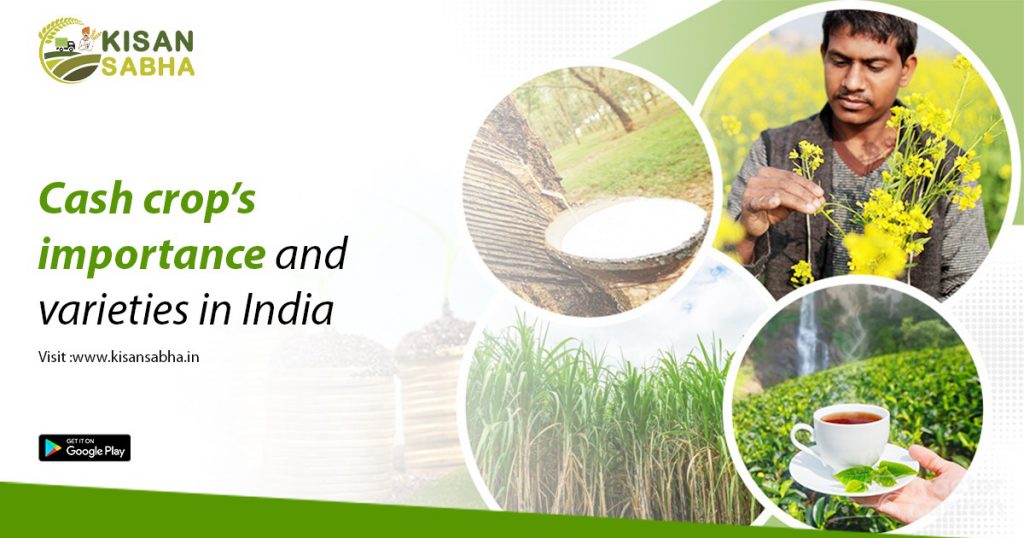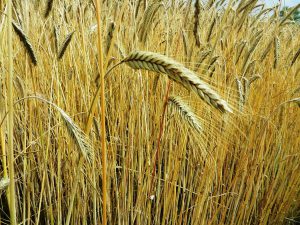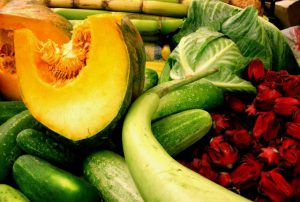Agriculture is one of the most important demands and fundamental activities in India. Farmers rely on agriculture for their primary source of income. Nearly 40% of farmers employ automation, a modern way of farming, to bring out cultivation, while 60% use traditional methods of farming.
Farmers raise a wide range of crops for their own consumption or to sell in the market, keeping the remainder as a surplus for future needs. To sell crops in the market, farmers must produce a variety of crops that are primarily used and sown for the purpose of selling them in the market and generating a profit.
What exactly are cash crops?
In contrast to subsistence crops, which are grown for the farmer’s personal consumption, cash crops are agricultural items grown with the purpose of getting sold on the market or exported for a profit (such as livestock feed or family food).
Common food and non-food revenue crops include cereals, oilseeds, coffee, cocoa, sugar cane, vegetables, fruits (including avocado and oranges), peanuts, cotton, and tobacco. Large-scale cash crop cultivation, particularly in developing countries, may conflict with local community resource and land usage needs. Farmers’ earnings are mainly determined by the pricing of major cash crops since they get affected by them.
What is the significance of cash crops?
Farmers rely on cash crops to make money and improve their standard of living. It contributes to the creation of job possibilities in agriculture and agro-based sectors, hence boosting and developing the economy. Increasing the amount of money available for agricultural investment and rural development fosters agricultural innovation.
As the world’s population grows, so will the demand for food. At that moment, finding ways to address that demand becomes necessary. Because it focuses on raising yields and generating quality, the production of such crops is an important step towards achieving global food security.
The Future of Money Crop farming is built on the concept of sustainable agricultural intensification, which aims to balance increased agricultural output with environmental conservation. Using technologies such as micro-dosing fertilizers, intercropping, genetic crop advancements, and so on, requires the preservation of soil fertility, biodiversity, and other ecosystem services. Reduced environmental impact is the only way to ensure long-term food security.

What are the risks of planting cash crops?
- Soil degradation affects both the quality and quantity of product.
- A lack of consistency in quality.
- Price sensitivity in various markets due to pests or drought, harvest failure, and lack of market access during a pandemic.
- Farmers should avoid such commodities because they will be difficult to transport to their desired markets while some countries remain closed and interstate travel get restricted.
India’s most profitable cash crops
The following are some of India’s most profitable cash crops, with high yields and productivity:
1. Cotton
Cotton is a cash crop grown in tropical and subtropical locations with maximum temperatures ranging from 21 to 30 degrees Celsius and annual rainfall ranging from 50 to 100 cm. A excellent crop benefits from a lot of rain at the beginning and sunny, dry weather as it ripens.
It is predominantly a Kharif crop, but it is also planted in Tamil Nadu as a Rabi crop. After China and the United States, India is the world’s third-largest cotton producer. Gujarat is the state in India that produces the most cotton.
2. Jute
Jute is also one of the most profitable cash crops grown. High temperatures of 240 to 350 degrees Celsius is necessary, as well as heavy rainfall of 120 to 150 cm and relative humidity of 80 to 90 percent. West Bengal, Bihar, Assam, Andhra Pradesh, and Odisha produce more than 99% of all jute consumed in India, with West Bengal leading the way.
3. Sugarcane
This bamboo family member is the principal source of gur, Khandsari, and sugar. It is a crop that matures slowly, taking about 10-15 months. It requires a hot, humid climate with annual rainfall ranging from 75 to 150 cm and average temperatures ranging from 21 to 270 degrees Celsius. Harvesting is best done during the brief, cool, dry winter season. Uttar Pradesh is India’s leading producer, followed by Maharashtra. Other states include Karnataka, Tamil Nadu, Andhra Pradesh, Bihar, Gujarat, Haryana, Uttarakhand, and Punjab.
4. Oilseeds
India has the world’s largest acreage and production of oilseeds. Oilseeds farmed in India include groundnut, sesame, rapeseed, linseed, castor seed, sunflower, and soybean. India is the world’s second-largest producer of groundnuts, trailing only China. 70% of all items manufactured in India get produced in four states: Andhra Pradesh, Tamil Nadu, Gujarat, and Rajasthan. Andhra Pradesh is the largest producer.
In conclusion, cash crops play a pivotal role in India’s agriculture sector and the livelihoods of its farmers. As a diverse country with varying climates, India cultivates a wide range of cash crops, from cotton and jute to sugarcane and oilseeds, contributing significantly to the country’s economy. These cash crops not only provide income for farmers but also create employment opportunities and stimulate rural development.
Visit us- www.kisansabha.in





